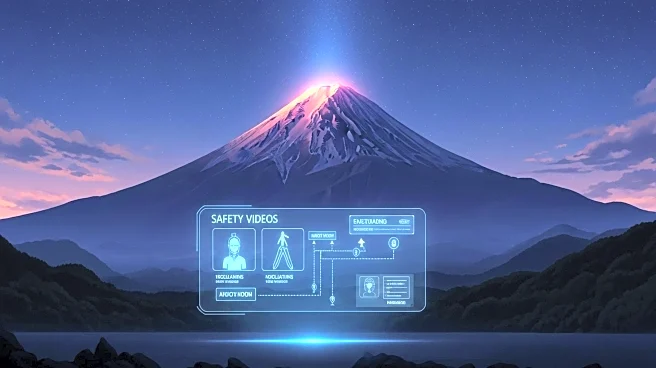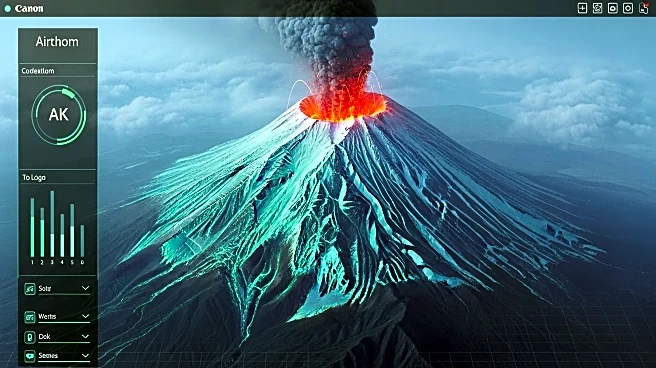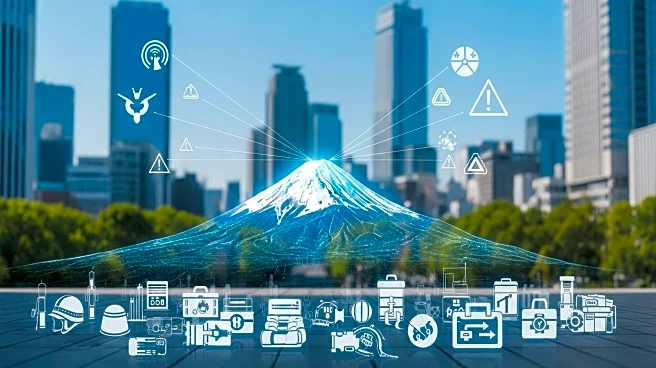What's Happening?
Japanese officials have released AI-generated videos to prepare the populace for a potential eruption of Mount Fuji, Japan's tallest peak. Although Mount Fuji has been dormant since its last eruption in 1707, it is considered 'potentially active' by geologists. The videos, released in conjunction with Volcanic Disaster Preparedness Day, depict scenarios where Tokyo, located 60 miles from Mount Fuji, is covered in volcanic ash within hours of an eruption. This simulation aims to educate residents on emergency preparedness measures, highlighting the potential for transportation disruptions, food and power supply issues, and long-term respiratory problems. Despite no current signs of an impending eruption, the government emphasizes the importance of readiness.
Why It's Important?
The initiative underscores the importance of disaster preparedness in regions prone to seismic and volcanic activity, such as the Pacific Ring of Fire. By simulating the effects of a Mount Fuji eruption, the Japanese government aims to mitigate potential chaos and health risks associated with volcanic ash. This proactive approach could serve as a model for other countries facing similar geological threats. The preparedness measures could significantly reduce the impact on Tokyo's infrastructure and public health, ensuring that residents are equipped to handle such emergencies effectively.
What's Next?
Japanese officials may continue to develop and refine emergency preparedness strategies, potentially incorporating more advanced technologies and simulations. Public awareness campaigns and drills could be expanded to ensure widespread understanding and readiness. The government might also collaborate with international experts to enhance its disaster response capabilities. Monitoring systems around Mount Fuji could be upgraded to provide early warnings, further minimizing risks to the population.
Beyond the Headlines
The use of AI-generated simulations for disaster preparedness reflects a growing trend in leveraging technology to address natural hazards. This approach raises ethical considerations regarding the accuracy and potential psychological impact of such simulations. It also highlights the need for ongoing public education and engagement to foster resilience in communities facing environmental threats.













